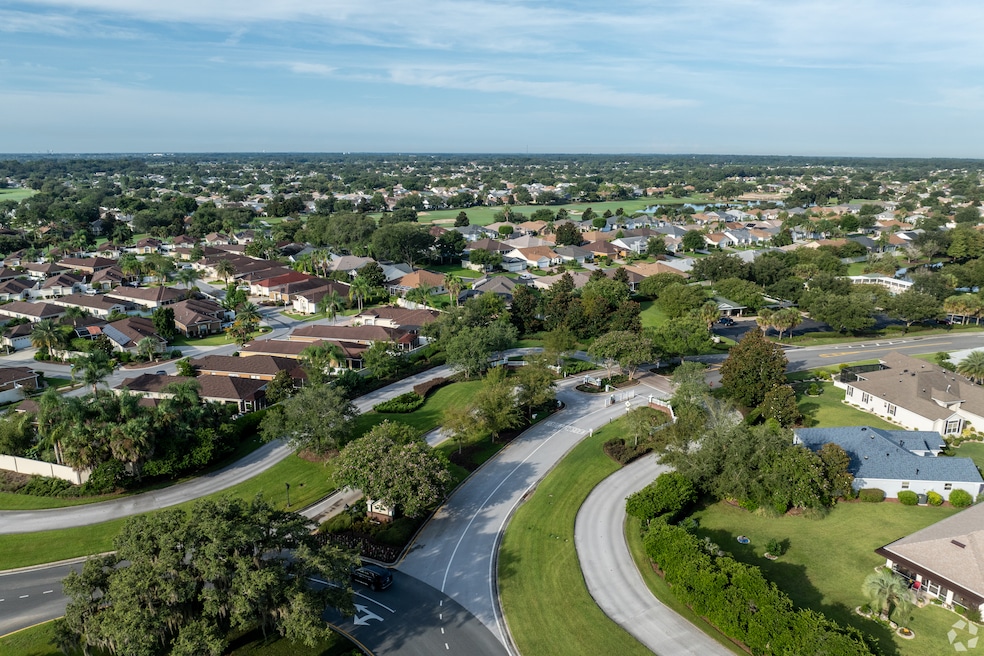The sun-splashed states of Florida and Texas dominate U.S. home sales for master-planned communities, a recent report found.
Florida projects represented 37% of the top 50 master-planned communities with the most sales, while Texas was second at 35%, an analysis from real estate consultancy RCLCO showed. Nevada came in third at 10%.
All three states are in the U.S. Sun Belt, a region covering parts or all 18 states in the U.S. Southeast and Southwest. It offers warm climates and benefits from strong job creation.
Many of the top-selling developments in the Sunshine State are located along the Interstate 75 and Interstate 4 corridors in the central and southwest part of the state. The Villages, a 55-and-over development in Central Florida northwest of Orlando, led all MPCs with 3,208 home sales last year, up 6% from 2023, the report showed.
But the Houston metropolitan area is easily the largest master-planned market in the country, with more than 7,500 sales last year among the top 50 developments, according to Karl Pischke, an RCLCO principal who heads the firm's real estate economics practice for the Southeastern U.S. A pro-growth mindset is a big part of Houston's supremacy, he said.
"It's the job growth and how favorable it is for new development, given the large tracts of land available," Pischke said in an interview.
Safe haven
RCLCO has compiled its list of top-selling master-planned communities since 1994. It defines a master-planned community as one with a comprehensive plan by an overarching developer that incorporates housing types, sizes and prices. In addition, the community has common space and amenities.
To be sure, master-planned communities have their drawbacks. They tend to include high density, potentially elevated homeowner association fees and "cookie-cutter" home styles.
"There are benefits, but it breeds conformity," said Jack McCabe, a U.S. housing analyst with McCabe Research & Consulting. "Do you want to live with someone dictating the terms of your enjoyment of your property?"
Still, U.S. homebuyers increasingly view the developments as a "safe haven" to housing affordability challenges, Pischke said.
In tracking the top 10 top-selling master-planned communities as a percentage of overall home sales, RCLCO found that they performed especially well in times of economic uncertainty, such as the years following the Great Recession and the COVID-19 pandemic.
"They consider the amenities that they are offered, the place-making and the lifestyle that's created by these communities really as insulation from market risk or uncertainty around the value that other locations or homes might provide," Pischke said during a recent webinar.
Future looks bright
Residents often pay a premium for the safety and security of living in a master-planned community, though the RCLCO study didn't specifically address that, Pischke said.
From the Homes.com blog: How to Buy a House in 2025: A 12-Step Guide to Homebuying
Despite the uncertainty of government policy and mortgage rates, master-planned projects that can offer a wider range of housing types and prices will likely boost market shares and sales volumes in the coming years, he said.
"With long-term demographic tailwinds and housing demand fundamentals, I think it suggests a good reason for us to be optimistic about the future for master-planned communities," he said.
RCLCO hosted a webinar to discuss its findings. It also addressed broader housing market trends.
The firm recently conducted a homebuyer preference survey of more than 1,900 U.S. households that bought homes in the past two years or expect to buy in the next three years. Given that affordability concerns often limit what consumers can buy, respondents were asked about tradeoffs they're willing to accept.
Though they generally are OK with older construction, many respondents qualified that by saying only if the homes were updated with high-end finishes and new appliances, RCLCO principal Cameron Pawelek said. Households are willing to trade reduced or no garage space for more living space. And while respondents said they are open to smaller homes, more than 90% still said they want at least 1,500 square feet.
"People say they want a smaller home, but that doesn't necessarily mean a small home," Pawelek said.

